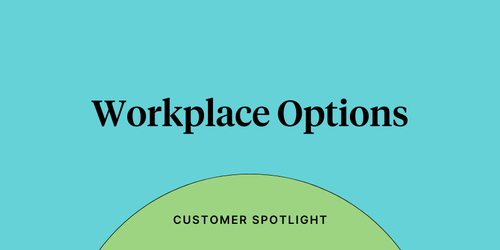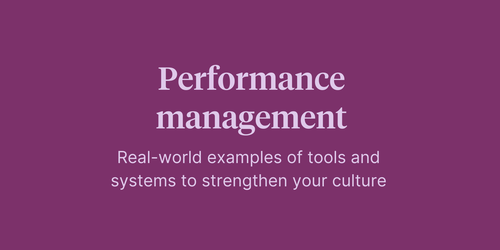
8 strategies for fostering employee connection at work

Our teammates, work, and company inspire us to show up to work every day and do our best. Together, these three factors create employee connection, or the network of relationships, shared values, and emotional bonds formed within a workplace. When individuals feel connected to their company, they can experience improved job satisfaction, loyalty, productivity, and more.
Building a connected workplace has become more challenging in recent years. With in-office, hybrid, and fully remote talent, companies must innovate and adapt to create a successful employee connection strategy – but fostering these strong relationships is worth the effort.
In this article, we explore what employee connection is, why it’s important, and how your company can build a unique strategy and workplace culture that nurtures stronger ties with your team. Here’s your guide to nourishing these bonds and unlocking the full potential of your organization.
What is employee connection?
Employee connection, or workplace connection, refers to the meaningful relationships and interactions individuals have while working at your company. When employees feel connected to their colleagues, they are more likely to feel a part of something greater than themselves. This sense of belonging is key to building both strong teams and organizational culture.
Employee connection comes in a few different forms. Individuals can connect to the:
- People: Many employees develop deep relationships with their managers, teammates, cross-functional colleagues, etc.
- Work: Some individuals find connection through meaningful work and professional growth opportunities.
- Purpose: Employees may identify with a company’s mission, values, and ability to enact change.
While some individuals will organically connect with all three of these factors at your company, others might relate to just one or two. Luckily, your business can offer initiatives to drive connections. This can take many forms, including hosting internal events where employees can get to know each other, offering ongoing training programs to develop talent, and encouraging senior executives to embody the company’s values every day to lead by example. We’ll share a few more ways businesses can foster employee connection in a later section.
Why is employee connection important?
When employees feel connected to their peers, work, and company, they are more likely to be satisfied with their jobs and stay with your organization longer. This is particularly important as many companies continue to hire remote and hybrid employees. In fact, Pew Research found that 53% of remote and hybrid workers say working from home makes it harder to feel connected to their coworkers. Regardless of where they work, every employee deserves to feel valued and connected.
Plus, investing in employee connection is good business. Companies that work to improve connection for their employees can benefit from:
- Better teamwork: When employees have strong relationships with their teammates and trust their colleagues, they can more seamlessly work together and achieve their goals.
- Higher retention: Strong connection boosts employee loyalty and may convince individuals to stay with your business longer.
- Improved communication: Employee connection can encourage your workers to use more open and honest communication with their colleagues, helping build a culture of transparency and ongoing feedback.
- Increased productivity: When employees feel connected to their work, your company’s mission, and/or their teammates, they are more likely to be motivated and satisfied in their roles.
- Higher engagement: A stronger sense of connection contributes to a workplace culture where employees can be themselves, voice their ideas, innovate, and go above and beyond.
What is an employee connection strategy?
While an employee’s sense of connection may grow organically, your business can help things along through certain workplace initiatives. This collection of initiatives is called an employee connection strategy, which outlines the program(s) your company uses to help employees build relationships with their teams, find meaning in their work, or become a part of your company’s larger mission.
If you’re looking to build your own employee connection strategy, start by creating a document containing the following criteria for each potential initiative:
- Type of program
- Connection to overall business objectives
- Cost
- Expected ROI
- Target employee population/demographic
- Internal launch/communication strategy
- KPIs to measure success
Using this outline will give you a better understanding of which of your proposed initiatives will have the largest impact and make the best use of your team’s time and resources. Need help identifying some potential employee connection initiatives? Here are a few ideas to jumpstart your brainstorm:
1. Regularly recognize employee contributions
Regularly recognizing employees’ hard work and thanking them for their contributions can boost connection. In fact, one survey found that 92% of employees feel valued in companies with recognition programs, compared to only 60% in businesses without them.
Ongoing recognition can validate employees and positively reinforce their behaviors, boosting both workplace happiness and connection. Many companies tie recognition to their company values, reinforcing organizational culture and strengthening the employee’s connection to the company’s mission.
2. Use cascading goals
When employees understand how their day-to-day responsibilities are linked to larger business initiatives, they are more likely to find their work fulfilling and meaningful. Using a goal-setting framework like SMARTER or objective and key results (OKRs) gives employees a clear understanding of what's expected of them and what success looks like. Pair this with cascading goals, and employees can see firsthand how their work contributes to organizational objectives. This can help employees feel more connected to business performance and progress.
3. Give back to the community
By regularly giving back to your local community, your business can help employees feel connected to something larger than themselves. If you don’t already, consider scheduling regular volunteering opportunities, offering volunteer time off (VTO), matching charitable donations, or even taking on pro bono work. These initiatives can help your employees feel more aligned with your mission and values – and like they’re making a difference by working at your company.
4. Celebrate milestones
Another way to connect your employees to your business is to celebrate milestones like birthdays and work anniversaries. Giving individuals the day off, a small monetary reward, or a personalized note on their special day can make employees feel seen and show that your business cares about them and appreciates their loyalty.
5. Listen to your employees
In order to develop a strong relationship between your business and your employees, make it a practice to listen to your employees and implement their feedback. Running regular workplace surveys is one of the most effective employee listening strategies, but only if your business really takes action on the suggestions you receive. When employees trust their feedback will lead to change, they will be more forthcoming with their answers and feel more connected to your business.
6. Communicate clearly and transparently
Never underestimate the power of communication. Keep your employees up to date on your latest business successes and challenges so they feel connected to your organization’s journey and overall success. Regular all-hands meetings, email newsletters, and instant messaging updates help keep everyone informed of the latest business news.
Apart from employer-employee communication, you’ll also want to ensure your business has the right tools in place to facilitate effective employee-employee communication. Invest in systems that support:
- Project management
- Instant messaging
- Video and conference calls
- Calendars
- Collaboration
These can help bring your teams together and prioritize open and honest communication, even when your employees aren’t in the same office or timezone.
7. Prioritize face time
As businesses become more spread out and hybrid and remote work continue to grow, in-person face time becomes imperative. Bringing your workforce together to see each other face-to-face – even just a few times a year – can remove barriers and allow employees to feel more connected to their colleagues. This could include company-sponsored events like virtual happy hours, offsites, team lunches, training events, birthday celebrations, and more.
Another way to drive connection: Ensure managers meet with their direct reports regularly and lead effective 1-on-1s. This recurring face time allows employees to develop a rapport with their manager, give and receive feedback, and ensure their work is seen and valued. 1-on-1s are a crucial ingredient in helping employees feel more connected to their managers.
8. Foster a sense of belonging
In order to help employees feel like a valued part of the team, foster a workplace environment in which individuals feel they can be their true selves. While building an open and welcoming culture doesn’t happen overnight, there are a few actions you can take to help employees meet new teammates and feel supported by your business, like:
- Creating a new-hire buddy program so your newest joiners can meet someone new and get acclimated to your company quickly
- Offering employee resource groups (ERGs) to help individuals connect with others who share similar backgrounds, experiences, or interests
- Celebrating inclusive holidays to honor different cultures
- Encouraging employees to include gender pronouns in email signatures, instant messaging applications, and video conferencing software
Together, these initiatives and more can help your company build an inclusive culture that drives employee connection and makes individuals from all walks of life feel valued and seen.
Measure employee connection with Culture Amp
Employee connection is challenging to measure and report on, but Culture Amp’s people experience platform makes it possible for businesses to quantify and track these seemingly intangible workplace elements. Culture Amp’s suite of tools helps companies prioritize engagement, performance management, and development. By mastering these three pillars of the workplace experience, you can propel productivity, drive innovation, and build a vibrant workplace culture in which employees feel connected to their work, their teammates, and your business.
Jumpstart your employee connection strategy
From identifying high-opportunity areas to proving the ROI of your initiatives, Culture Amp can help your business build a workplace employees love.



